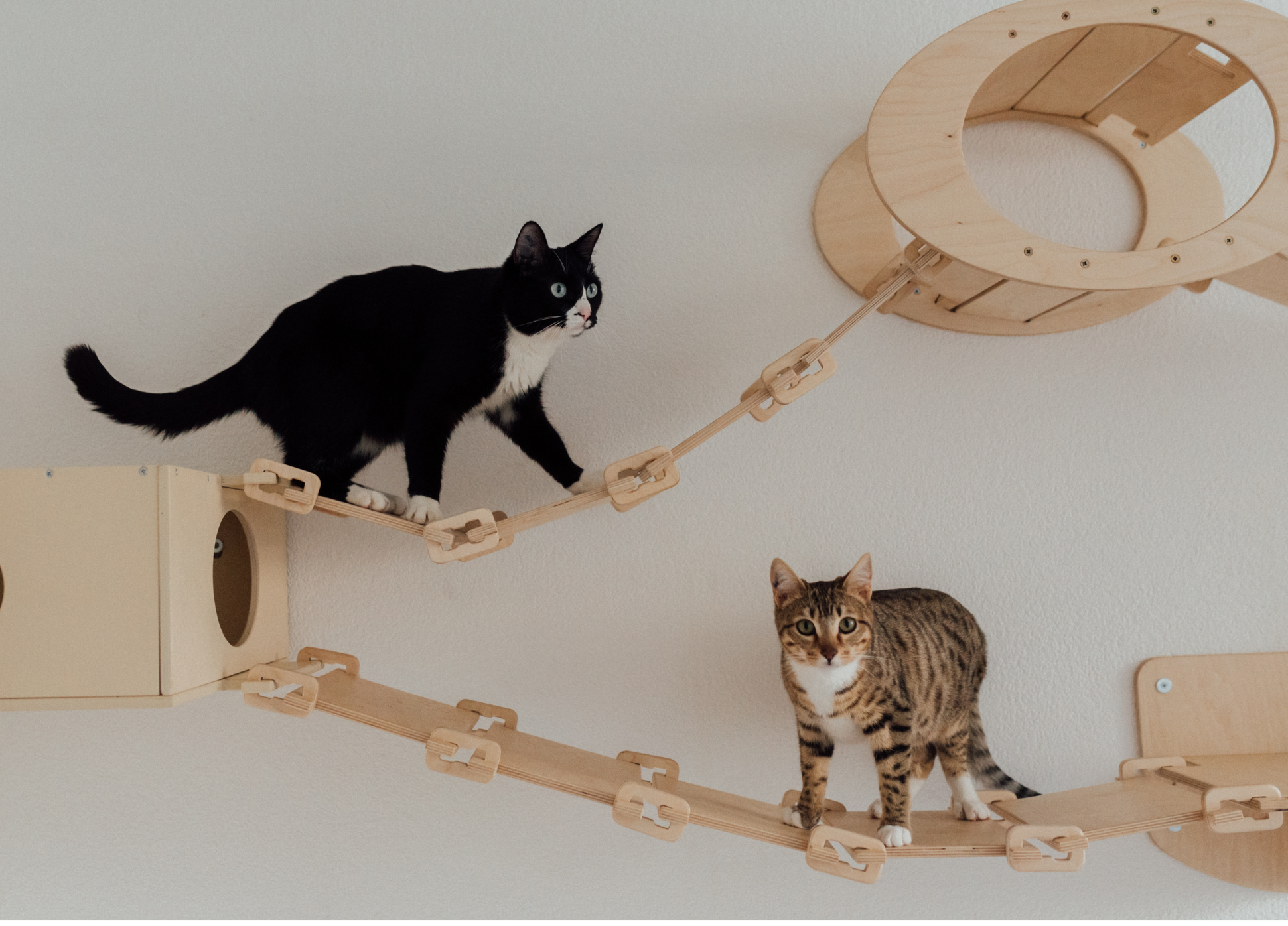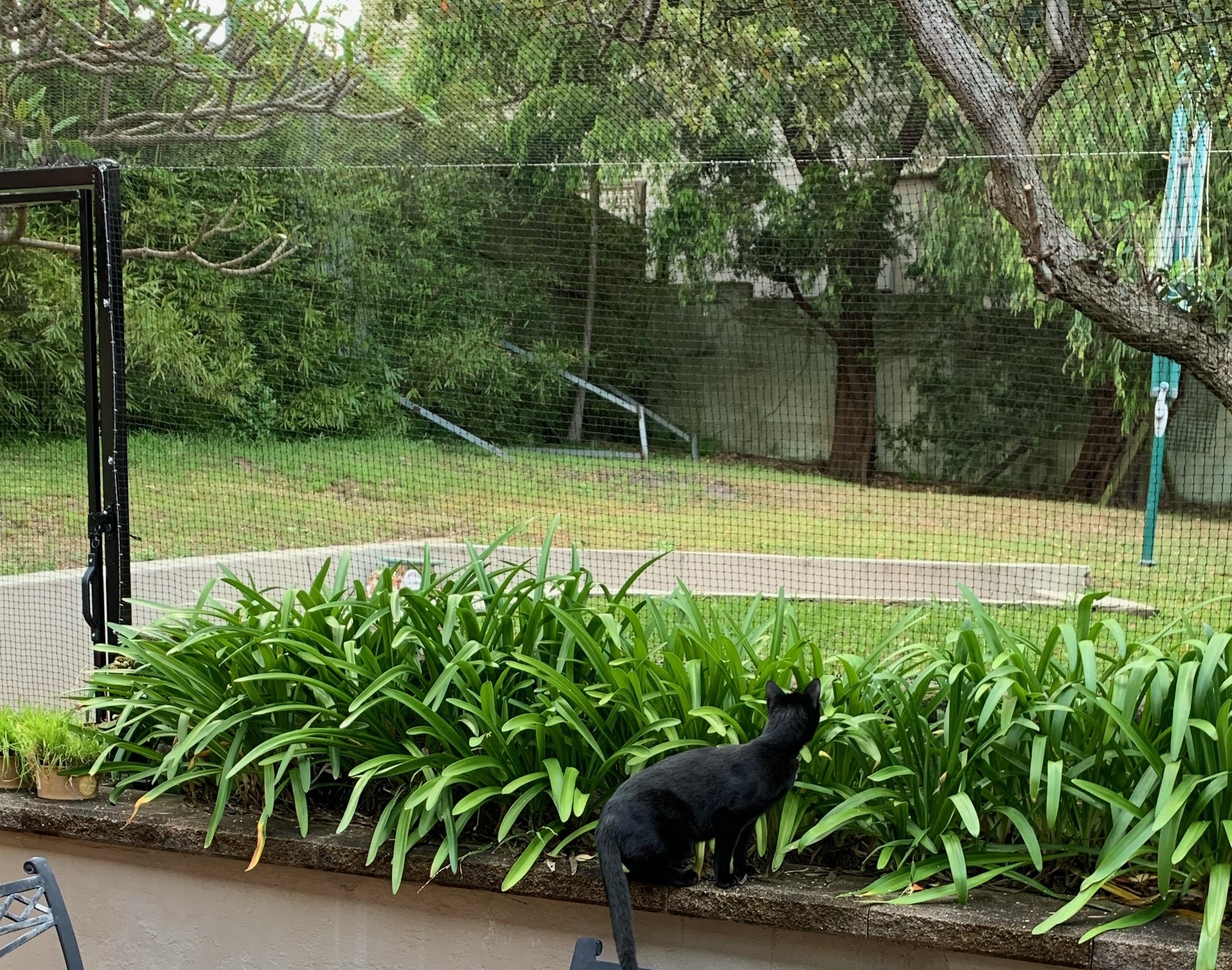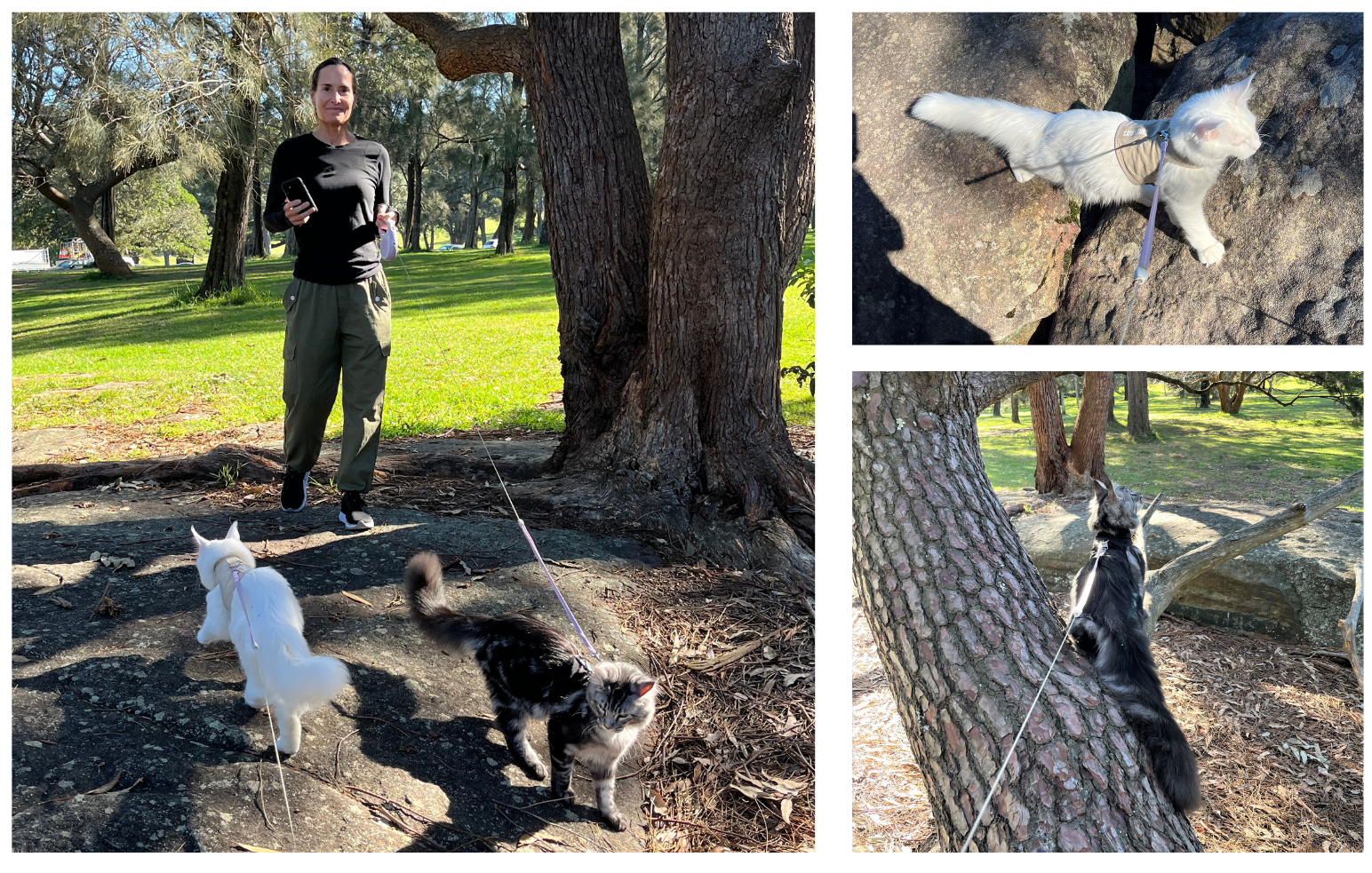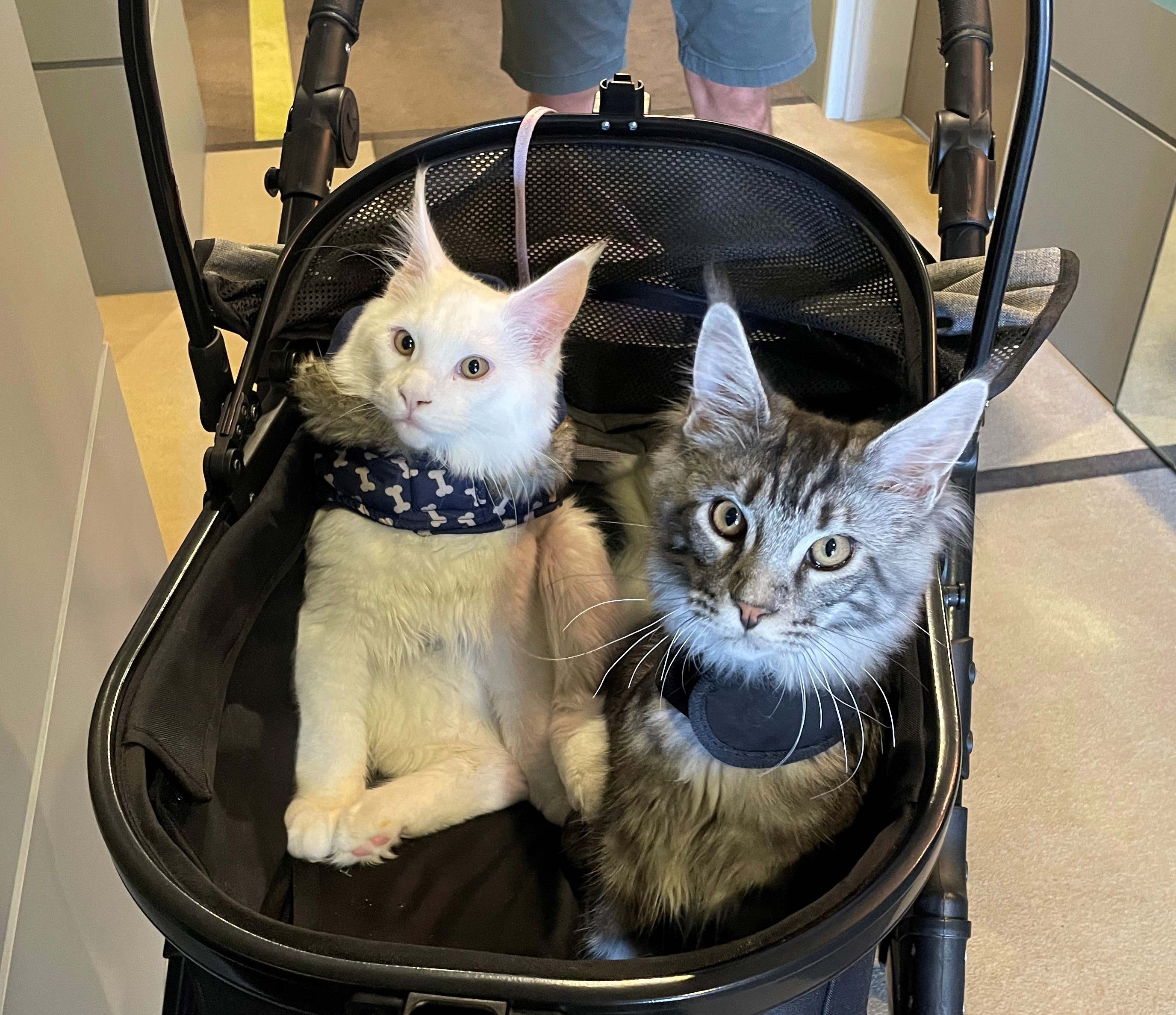This month, which is National Biodiversity Month, we discuss the benefits to cats and to native biodiversity of curtailing wandering moggies, and hear from local responsible cat owner Kendra, on how she trained her cats to walk on a lead.
Research released in June this year found that roaming pet cats kill 546 million animals a year in Australia, 323 million of which are native animals.

But cats are domesticated animals that can happily live indoors for their whole life. In fact, research shows cats that stay indoors are healthier and live substantially longer lives, when the dangers of free roaming, such as road accidents and injuries, attacks by other animals, and exposure to parasites and diseases, are eliminated. Maybe that’s why a majority of Australians are now keeping their cats contained.
Research has shown that cats can lead a happy and fulfilled life indoors, when their owners care for their environmental and behavioural needs, such as access to vertical spaces to climb and jump, and safe places to sharpen their nails. There are plenty resources to help any cat owner optimise their indoor environment.
There are also ways to enable cats to spend time outside safely, such as cat enclosures. Motivated to protect local wildlife but also their current cat Luna, after tragically losing their previous pet to a road accident, a cat-loving Dover Heights resident used Sydney Cat Enclosures to install this spacious exercise enclosure for her rescue kitty. Luna loves using the enclosure and can happily watch the wildlife pass by without harming them. Local possums even use the roof of the enclosure to safely travel between trees!

Another option is walking your cat on a lead. Bondi Junction resident Kendra, lives in an apartment with her husband and two cats. She is a strong believer that cats should never be left outside on their own, for their own safety and that of native wildlife. Kendra is keen to encourage responsible cat ownership and explains how she went about getting her Maine Coon cats used to walking on a lead.
How do you go about lead training a cat?
We started harness training at 12 weeks old, I would put on the harnesses for 5 minutes at a time, a couple of times a day at first. Once they were starting to relax with it and wearing the harness to eat and play in, I knew we could try to take them outside on a leash.
How do you keep them safe while out?
They have a pet pram that is safe to harness them into, in order to transport them to parks, at which point they go onto the leashes and run around. My husband and I are both needed to walk the cats, one for each. They tend to sprint up trees every now and then, and we have to be ready to go wherever they want to go. One person could not handle both cats, as they almost always go in different directions! This is the fun of cat walking - letting them lead you and watching them explore. When I see a dog, I will lock the leash to keep the cat that I'm walking close and pick him up if it looks like the dog is coming too close. Dogs tend to be unleashed, even the ones that don't behave well around cats, so we have to stay vigilant.
 Why is it important to you to walk the cats on a lead?
Why is it important to you to walk the cats on a lead?
It is great, safe stimulation for the cats. They love it when we pull out the pram! They will jump in on their own, ready to go out. They sit happily while we harness them into the pram, and mew at us if we take too long getting out the front door. Ensuring our cats are not responsible for killing native wildlife is also very important to us.
 Protecting local wildlife from feline predators is equally important to local native animal rescue volunteers. WIRES volunteer Steph Carrick says CSIRO estimates each roaming pet cat kills on average 186 reptiles, birds and mammals per year. She adds that cat attacks are one of the leading reasons for the thousand plus rescues that WIRES undertakes in Waverley each year, with hundreds more animals being killed outright or euthanised by vets.
Protecting local wildlife from feline predators is equally important to local native animal rescue volunteers. WIRES volunteer Steph Carrick says CSIRO estimates each roaming pet cat kills on average 186 reptiles, birds and mammals per year. She adds that cat attacks are one of the leading reasons for the thousand plus rescues that WIRES undertakes in Waverley each year, with hundreds more animals being killed outright or euthanised by vets.
Jennifer Bastin, coordinator at Sydney Wildlife Rescue, explains cats are a particular threat to young birds and our local Ringtail possums. Cat saliva is toxic to wildlife, requiring urgent antibiotics to be administered for survival. Jennifer also notes that off-leash dogs also cause harm to wildlife, particularly Brushtail possums, plovers and ducklings in our area.
So, this National Biodiversity Month, protect your pet and protect our native wildlife by practising responsible pet ownership and cat containment. Find out more about responsible cat ownership in Waverley here.


